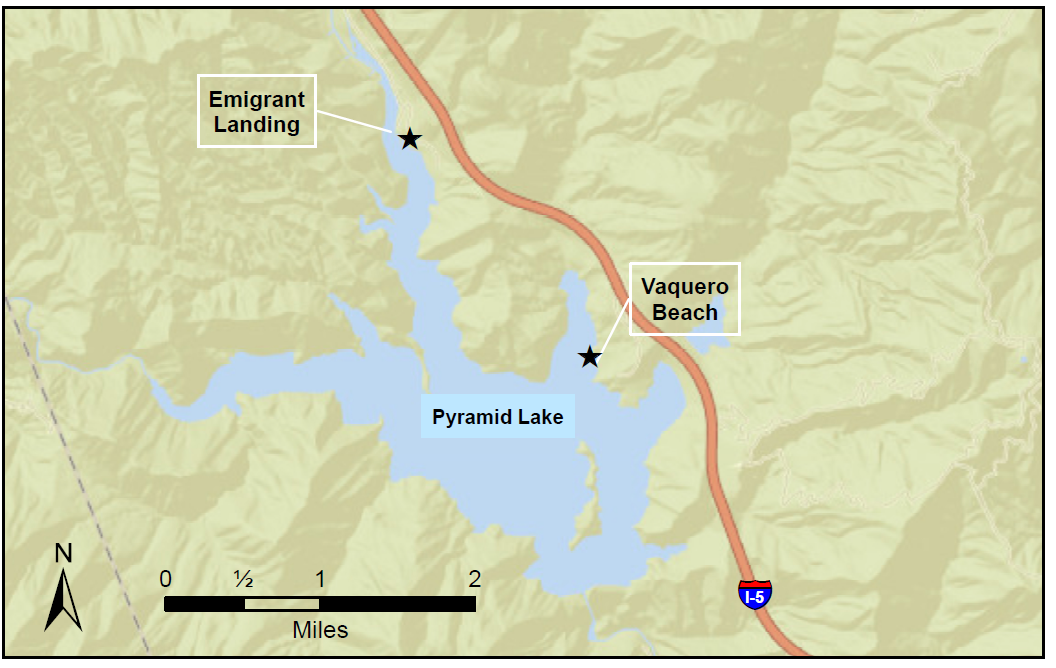Map of Pyramid Lake
SACRAMENTO – The Department of Water Resources (DWR) today lowered a danger advisory that had been in effect since July 13 at Pyramid Lake in Los Angeles County but urges all recreational users to continue to avoid water contact due to blue-green algae in the lake.
DWR lowered the level of the advisory from “danger” to “warning” after detecting a reduced amount of microcystins for a second consecutive week at Pyramid Lake. Emigrant Landing and Vaquero beaches remain closed to swimming. This advisory does not apply to Castaic Lake, which is open to boating. Swimming is allowed at Castaic Lake’s lagoon.
Water sampled on July 23 at Pyramid Lake contained 6.60 micrograms per liter of microcystins, a level that prompts a warning level advisory. Officials continue to monitor microcystin levels to ensure the toxin remains below danger level.
Advisories are based on the potential health risks from algae. Exposure to toxic blue-green algae, also known as cyanobacteria, can cause eye irritation, allergic skin rash, mouth ulcers, vomiting, diarrhea, and cold- and flu-like symptoms. Pets can be especially susceptible because they tend to drink while in the water and lick their fur afterwards.
Bloom conditions can change rapidly, and wind and waves may move or concentrate the bloom into different regions of the lake. The algal bloom can accumulate into mats, and scum, form foam at the surface and along the shoreline, and range in color from blue, green, white, or brown.
State guidelines on cyanobacteria and harmful algal blooms recommend the following precautions be taken in waters impacted by blue-green algae:
- Take care that pets and livestock do not drink the water, swim through algal blooms, scum, or mats, or lick their fur after going in the water. Rinse pets in clean water to remove algae from fur.
- Avoid wading, swimming, or jet or water skiing in water containing algal blooms, scum, or mats.
- Do not drink, cook, or wash dishes with untreated surface water from these areas under any circumstances. Common water purification techniques such as camping filters, tablets, and boiling do not remove toxins.
- Do not eat mussels or other bivalves collected from these areas. Limit or avoid eating fish. If fish are consumed, remove the guts and liver and rinse filets in clean drinking water.
- Get medical treatment immediately if you think that you, a family member, friend, pet, or livestock might have been poisoned by blue-green algae toxins. Be sure to alert medical professionals to the possible contact with blue-green algae. Also, make sure to contact the local county public health department.
For more information visit:
- California Department of Public Health
- State Water Resources Control Board
- CA Office of Environmental Health Hazard Assessment
- US Environmental Protection Agency: CyanoHAB website
- Centers for Disease Control and Prevention
Contact:
Maggie Macias, Information Officer, Public Affairs, Department of Water Resources
(916) 653-8743 | maggie.macias@water.ca.gov
###
